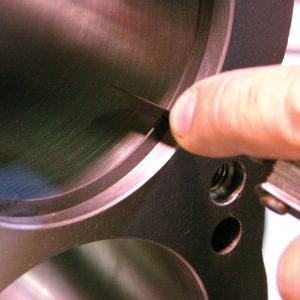There Could Be a Ford in Your Future with More Parts and Big-Inch Crate Motors for the Blue Oval Set and Others

Photos By Will Smith and Peter Murphy
Ford engines are hot, and everyone—even non-Ford guys—are talking about it. The small-block Ford is an awesome package that is made even more awesome by Ford Racing and aftermarket parts. It has continually gained popularity as a high-performance buildup, as a Ford In A Ford engine transplant and as a replacement performance engine for vehicles that were optioned as such but were less equipped when new. With all of this activity surrounding the small-block Ford engine, it is safe to say that it is quickly becoming the small block of choice.
This has never been more evident than in the truck community. There was a day when it was common to supercharge a small-block Chevy for virtually any pickup truck swap, including reworked older Ford pickups. This was done to increase the bottom-end power for the demanding performance-minded truck enthusiast. Torque is king, and everybody knows it; thus, the torque limitations of the 350-inch mouse motor were masked with pressurized induction, and that includes the ever-popular stroked 383-inch aftermarket Chevy. What we have to ask those folks is this: Could there be a Ford in your future?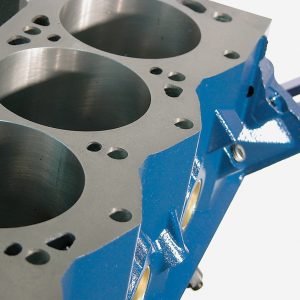
The small-block Chevy engine has also grown by incorporating dimensionally larger aftermarket parts and certain crankshafts, and Chevy recently introduced its version of the 427 for the new Z06 Corvette, but it’s long before those parts and engines are available. Bill Mitchell, whose new Ford block we show you here, also has beefy items for the Chevy that will enable the engines to grow, too. But it’s the Ford small block that has benefited from great new engine combinations that are available over the counter, the most popular of which are the 392 (available in short-block or crate form) and the astonishing 427-inch bore/stroke combination. For the more serious enthusiasts among you, Bill Mitchell’s new Man O’ War (MOW) Ford small-block monster block can be stroked and bored to 470 ci!
We call his the small-block monster motor because it is beefier and stronger and can accommodate bigger bores and longer strokes. It’s also thicker at the bulkheads—1 inch thicker than stock—and along the cylinder banks and deck. The MOW block also has splayed four-bolt mains, complete with billet steel caps and 1/2-inch fasteners. And if you want all these cubes without the extra 60 pounds of the iron block (in all the right places, however), Mitchell has gone one better and will shortly introduce the heavy-duty block in aluminum.
There’s certainly a degree of magic connected with Ford and its 427 engines with all of its special models over the years. There’s no denying that this popularity is due to Ford’s 427 FE and SOHC engines, both of which are big-block motors. As good as these engines are, they are not your everyday choice for all Ford engine installations, but you small-block Ford guys now have something to celebrate—there is a 427-inch alternative. Ford has built a number of great 427s over the years (and “427” is a nomenclature that gets the heart pumping), and when a well-running 351W motor makes sense where a small block better fits dimensionally, the cubic inches are available and affordable. As you know, Ford’s 427s are extremely costly to build or buy as a complete engine. But if size does matter—and we know that it certainly does when it comes to engine torque—and if something magical about 427 rings true for you, then there’s big-displacement Ford small blocks for you to choose from.

It has become rather convenient that the 351W motor, when fully bored and stroked, will easily calculate 427 ci of displacement. It’s also smaller, lighter and less expensive than its big-block 427 cousin. To wit, a small-block engine of this immense size can provide all of the performance of the big block, if not more, without the associated headaches of weight and heavier reciprocating and rotating internals. The benefits of the smaller cylinder block are obvious compared to the enormous heft of a big block, and the lighter weight means you don’t have to compromise your chassis. So when a super-strong cylinder block comes along, people take notice, because engine-building companies have used Ford’s performance blocks up to this point. Now available from World, the Man O’ War “monster block” (our term, not his) is a definite improvement over the stock original-equipment blocks.
World Products offers the Man O’ War in four deck heights: 8.200 inches, 8.700 inches, 9.200 inches and 9.500 inches. The 8.200- and 8.700-inch deck blocks are the 302-style, while the two taller decks (9.200- and 9.500-inch) are 351-style blocks. The minimum deck thickness on these beefy blocks is 0.600 inch.
An added bonus with the “C” version of the 302-style block is that it’s available with mounting positions for the oil pump and distributor in the same location as the 351 blocks. With the standard Ford 302 blocks, interference with the oil pump keeps maximum displacement to about 347 ci. The MOW “C” blocks will allow a maximum of a 375ci 302.

These new World blocks come with unfinished 3.990-inch or 4.115-inch bores, which must be finished to 4.000 inches and 4.125 inches, respectively. With a 4.250-inch stroke, the largest the block will handle, in a tall-deck block, look for a whopping 460ci small block—Hello, Ford lovers! Actually, the cylinders will safely bore out to 4.200 inches. That, along with the 4.250-inch stroke, will permit a radical small-block displacement of 470 ci. The bottom of each cylinder comes already notched for a high-swinging reciprocating assembly, so Bill Mitchell understands your intentions going in, which is why these blocks exist in the first place. There’s much more to these blocks than simply their intended size, and a lot of inherent problems were addressed going in. Lubrication was addressed; the MOW has priority-main oiling, half-inch oil passages and cast-in bosses for lifter cross-feeding. The block is also designed for production-type roller cams, so you can absolutely bolt on all typical Ford EFI equipment.
Compared to a bare 302 stock block, which weighs slightly more than 130 pounds, at 189 pounds for the short deck version and 227 pounds for tall deck version, the Man O’ War block will add weight to an existing Ford engine combination. There’s simply no way around that fact other than to understand that iron is used in all the right places and for all the proper reasons. The iron Man O’ War blocks offer a stronger, more rigid foundation, which eliminates dreaded lifter-valley cracking or web failure that leads to engine failure.
In addition to the blocks, Mitchell’s company offers several Ford-style cylinder heads as well as complete engines, all of which use the Man O’ War block as their foundation. It has been World’s success with the small and big-block Chevys, including Merlin big blocks, that have made them such a powerful company. World currently offers 632-inch Merlin engines and 454-inch Motown small-block Chevy engines, and that’s much the same for Smeding Performance, who also builds a number of Chevys. But one of Smeding’s newest packages is their 427 Cobra Special, and that’s just the thing for those of us who believe that 427 is truly a special number.
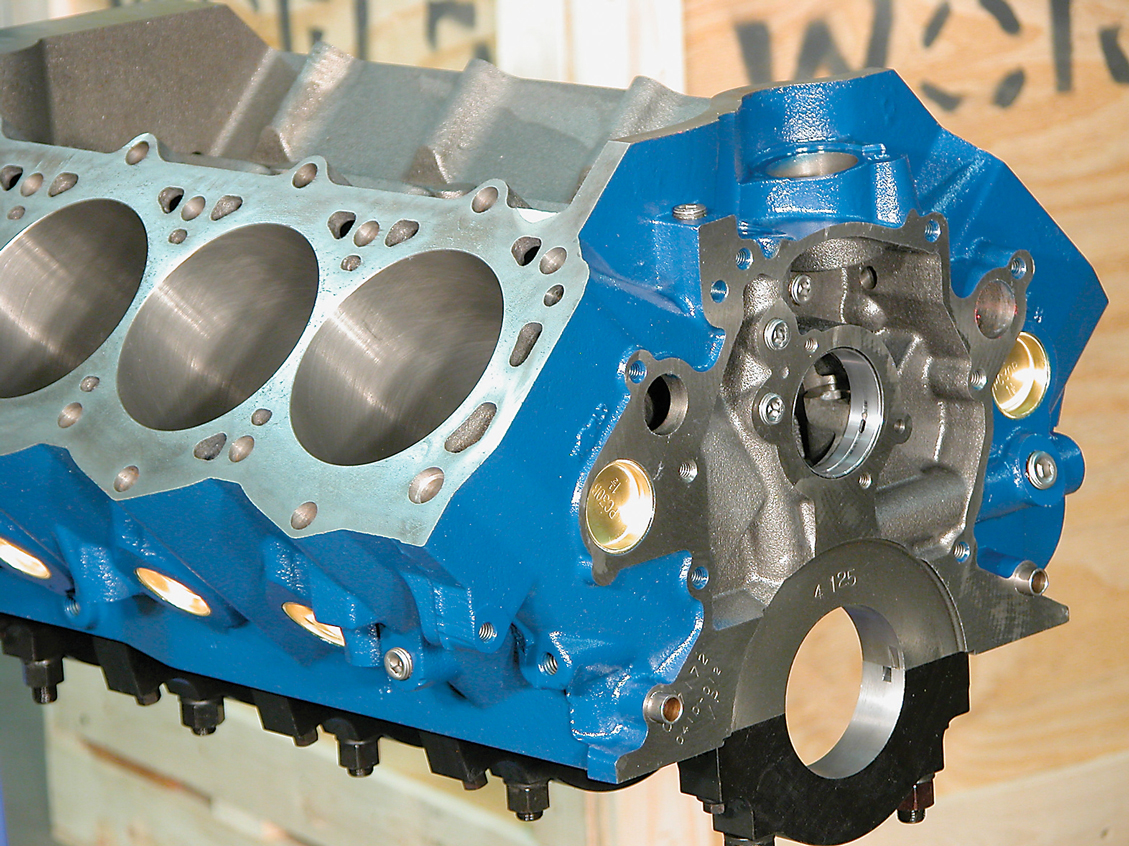
We wanted to bring you Mitchell’s new block, which we show you here, but we also wanted to show you what a typical 427-inch Ford small block looks like as it is in pieces and goes together using the stock and aftermarket parts available up to this point. To do that we made a trip to Smeding, where we had the opportunity to see firsthand how they put the engine packages together. Smeding’s 427 tips the dyno at 480 hp with a very streetable combination at a 9.7:1 compression ratio. This makes the motor quite livable as a daily driver but plenty potent when you need more than a little something under that hammer. Check out the assembly sidebar, where we show you how Smeding assembles a 427, and check out that Man O’ War beefy engine block so that you can decide if 427 is even enough!
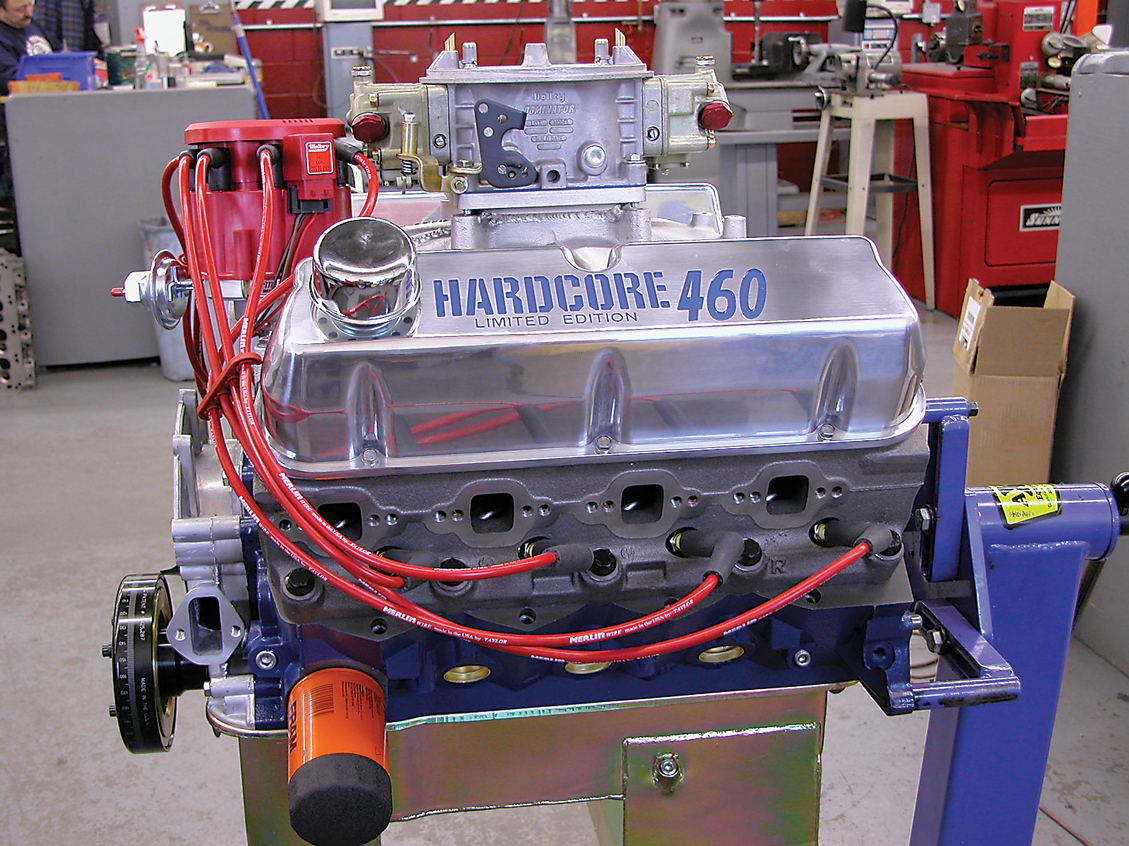
ALL BARK AND LOTS OF BITE

When we talk about 427 street engines, we are talking about the bread and butter of Smeding Performance. Smeding builds these big-inch small blocks all day long, and with lots of street activity in mind. Performance and dependability are the two key factors, and the 9.7:1 compression ratio works well enough with the balanced internals that this engine puts out 480 hp easily. You could definitely tip the scale at over 500—it’s all in the tune-up parts. The essentials are built in at Smeding, and here’s how the company does it.
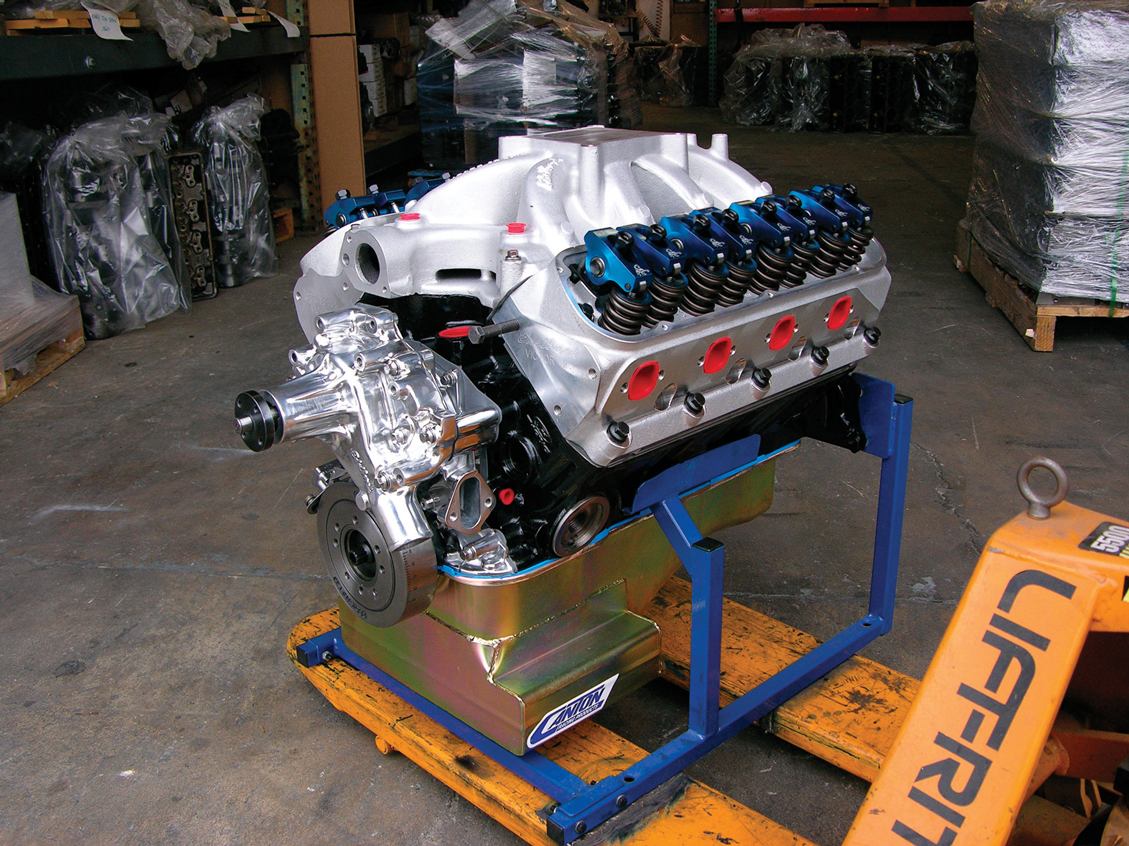

 By
By 










